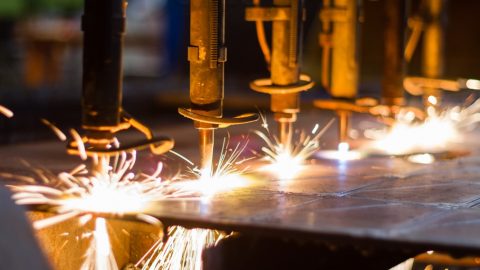
Illustration (Source: Internet)
There are several important factors to consider before addressing a technology solution for your business. Here are the most important features:
Scope of analysis: XRF handheld and LIBS are considered the best complementary technology. Users can combine them to cover a wider range of elements, including light elements (such as carbon) that some high-end LIBS analyzers can detect. Hand-held XRF can often detect magnesium through uranium. The analysis scope of the portable LIBS analyzer is a bit more scattered when looking at the periodic table, but may include elements such as carbon, aluminum, silicon, titanium, vanadium, chromium, manganese, iron, cobalt, Nickel, copper, niobium, molybdenum and tungsten make it the ideal solution for the metal industry. Factors and concentrations that can be determined by the OES analyzer depend on the material tested and the type of analyzer used. However, the common analysis range is from carbon to tungsten.
Portability: Portable XRF and LIBS analyzers are easily transported due to their compact form factor and compact design. In fact, the most advanced handheld XRF and LIBS analyzers weighing less than seven pounds and can be used directly on production lines. For operators who need access to tight or inaccessible spaces, the XRF and LIBS mobile analyzers move safely and conveniently to the operator. In contrast, mobile OES may be more difficult to deploy due to bulky shopping cart configurations, weight and limited access range.
Time: The most advanced handheld XRF and LIBS analyzers can deliver results in less than 10 seconds, compared to about 15 seconds on mobile OES. Although the time difference may seem small, it can easily be summed up if multiple readings are needed throughout the day. In addition, LIBS Mobile and OES Mobile require additional steps before analysis can be performed. These steps include sample preparation and daily setup procedures to ensure optimal analysis. These setup processes can take at least 10 minutes on LIBS and up to 30 minutes on mobile OES. Hand-held XRF requires no daily maintenance and is best described when making point measurement and more outstanding due to its simple operation.
Sample surface: As mentioned above, XRF handheld is a non-destructive method to perform elemental analysis. LIBS mobile and mobile OES are considered minimal destruction for two reasons. First, sample preparation is necessary before performing the analysis. Sample preparation is achieved by grinding the sample to remove surface impurities. The second reason why LIBS and OES is considered to be minimal destruction: only a small burn is left on the sample where the laser / electrical pulse occurs.
Use LIBS technology to detect carbon
LIBS has been a long-standing analytical technique used to verify materials. Only recently have companies been able to crack code using technology to measure carbon. Today, some portable LIBS analyzers are able to quantify carbon concentrations in low-alloy stainless steels and L + H, in addition to calculating carbon equivalents. Unlocking carbon measurement capabilities will be useful for quality control departments, metal fabricators, petrochemical plants and scrap recyclers who are looking to quickly measure carbon concentrations in metals. reception and under conditions where previous technologies were too bulky.
What next for elemental analysis technology?
A range of elemental analyzers are now available to help metal makers and manufacturers conduct rapid analysis of metal samples within seconds. In the future, the choice of analyzer types will expand further as researchers and engineers continue to shrink the technology to be able to incorporate it directly into the manufacturing process, or maybe a someday transported by drones, effectively used wherever elemental analysis is needed.
For manufacturers of elemental analysis technology, the key will respond to changes in market needs and preferences. It is extremely important that manufacturers work closely with metal fabricators and quality control personnel to provide maximum value.
Productivity and Quality Office